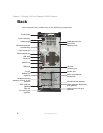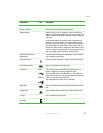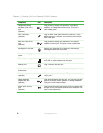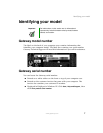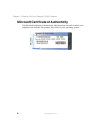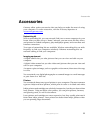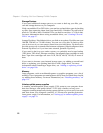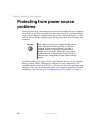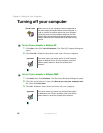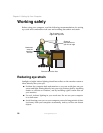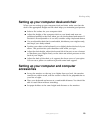12
Chapter 1: Checking Out Your Gateway E-6100 Computer
www.gateway.com
Storage Devices
If you need additional storage space or you want to back up your files, you
can add storage devices to you computer.
With a recordable CD or DVD drive, you can free up hard drive space by backing
up files, then removing them from your hard drive. Writable CDs can hold as
much as 700 MB of data. Writable DVDs can hold as much as 4.7 GB of data.
For more information about using recordable drives, see “Creating CDs and
DVDs” on page 37.
Iomega Zip drives, like diskette drives, use disks to store data. Zip disks can store
100 MB, 250 MB, or 750 MB of data. You can use a Zip drive to back up files
you do not use so you can remove them from your hard drive. Zip drives also
provide an easy way to transfer files between computers (if both computers have
internal Zip drives or if you have one external, portable Zip drive).
If you need to back up your entire system, you probably need a tape backup
(TBU) drive. TBU drives, like tape recorders, use magnetic tape cartridges to store
data. Tape drive cartridges can store 2 GB, 20 GB, 40 GB, 130 GB, or more of
data.
If you want to increase your internal storage space, try adding a second hard
drive or replacing your existing hard drive with a larger drive. For more
information about installing a larger drive, see “Adding or replacing a hard
drive” on page 100.
Memory
Large programs, such as multimedia games or graphics programs, use a lot of
memory. If your programs are running more slowly than you think they should,
try adding more memory. For more information, see “Installing memory” on
page 115.
Uninterruptible power supplies
A standby, uninterruptible power supply (UPS) protects your computer from
data loss during a total power failure. A UPS uses a battery to keep your
computer running temporarily during a power failure so you can save your work
and shut down your computer correctly. A UPS may also provide protection
from power surges. For information, see “Setting up an uninterruptible power
supply” on page 76.



